Do you have a question about the Seaflo 34 Series and is the answer not in the manual?
Highlights key features of the 34 Series diaphragm pump, including its duty cycle, priming capability, and dry-running ability.
Lists various uses for the diaphragm pump, such as sprayers, cleaning machines, water purification, and solar water systems.
Details the necessary components and accessories required for installing the diaphragm pump.
Provides step-by-step guidance on mounting the pump, securing it, and correct hose sizing for optimal performance.
Provides a chart for selecting appropriate wire gauge (AWG) based on distance for electrical connections.
Identifies numbered components of the pump, likely corresponding to available repair kits.
Addresses pump cycling on and off, suggesting checks for kinks, line size, and air leaks.
Covers pump failure to prime, listing causes like air leaks, diaphragm issues, debris, or insufficient power.
Details reasons for the motor not starting, including wiring, power supply, fuse, or switch problems.
The SEAFLO Diaphragm Pump, specifically the 34 Series, is an economical and versatile pump designed for various applications. It functions as a self-priming, on-demand pump with a pressure switch, capable of running dry for normal workloads. Its design incorporates a 3-chamber diaphragm pump, ensuring continuous duty and quiet operation. The pump is also ignition protected, adding a layer of safety.
The 34 Series pump is engineered to provide reliable performance in a range of systems. It operates by drawing liquid through an intake line and expelling it through a discharge line, controlled by an integrated pressure switch that activates and deactivates the pump based on system demand. This automatic control makes it suitable for applications requiring consistent pressure without constant manual intervention. The self-priming capability allows the pump to draw water from a source up to 6 vertical feet, eliminating the need for manual priming in most setups. Its ability to run dry without damage is a significant advantage, preventing pump failure if the water source temporarily runs out.
The pump is designed for ease of installation and integration into existing systems. It can be mounted in any position, though vertical mounting with the pump head in the down position is recommended to prevent potential motor damage from leaks. The pump utilizes an industry-standard mounting pattern, simplifying replacement or new installations. For optimal performance and noise reduction, flexible, reinforced hose piping with a minimum 1/2" ID is recommended for both intake and main distribution lines. Branch and individual supply lines should be no smaller than 3/8" ID.
Electrical connections require a dedicated circuit with a positive lead connected to the battery's positive terminal and a negative lead to the battery's negative terminal. An easily accessible electrical cutoff switch should be installed to control power to the pump, allowing it to be turned off when not in use for extended periods or when the tank is empty. The electrical circuit must be protected by an over-current protection device, such as a 15-amp fuse, in the positive lead. It is crucial that the pump circuit does not include any other electrical loads to prevent overloading. Proper wire sizing, as detailed in the electrical information chart, is essential for maintaining full voltage at the pump motor during operation.
The pump is suitable for a wide array of applications, including sprayer fixtures (vehicle-mounted and electric sprayers), cleaning machines, humidifiers, water purification systems, medical apparatus, food and beverage filling and liquid transfer, solar water systems, and any other pressurization system. Its robust design ensures consistent performance across these diverse uses.
Regular maintenance is crucial for the longevity and optimal performance of the 34 Series pump. To prevent issues such as pulsating flow or the pump cycling on and off, it is important to regularly check lines for kinks, ensure plumbing lines and fittings are adequately sized, clean faucets and filters, and verify fitting tightness for air leaks.
If the motor operates but the pump fails to prime or discharge, potential causes include restricted intake or discharge lines, air leaks in the intake line, a punctured pump diaphragm, insufficient initial amp supply to start the motor, debris clogging the valves, or a crack in the pump housing. Addressing these issues promptly will restore pump functionality.
For a motor that fails to turn on, troubleshooting should involve checking for loose or improper wiring, confirming the pump circuit has power, inspecting for a blown fuse, and evaluating the pressure switch and motor for defects.
To prevent common problems, it is recommended to use flexible potable water hose or PEX tubing instead of rigid piping, as this helps reduce noise and vibration. If rigid piping is necessary, a short length of flexible hose should be used between the pipe and the pump. The use of provided plastic fittings is encouraged over metal fittings when possible. Avoid adjusting the bypass personally; this should only be done by a qualified technician.
Regular sanitizing and maintenance are key to preventing underperformance. The pump should be maintained and winterized at appropriate times, especially before and after periods of storage, to ensure its continued reliability and efficiency. Following the installation instructions carefully and performing routine checks will help prevent damage and ensure the pump operates effectively for an extended period. Any actions outside the recommended guidelines in the manual may void the warranty and lead to pump damage.
| Type | Diaphragm Pump |
|---|---|
| Self-Priming | Yes |
| Dry Run Capable | Yes |
| Voltage | 12V DC |
| Pressure | 35 PSI / 2.4 Bar, 55 PSI / 3.8 Bar, 70 PSI / 4.8 Bar |
| Max Flow Rate | 3.0 GPM |
| Max Pressure | 35 PSI / 2.4 Bar, 55 PSI / 3.8 Bar, 70 PSI / 4.8 Bar (depending on model) |
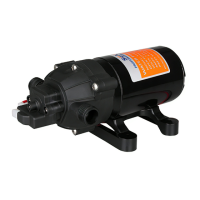
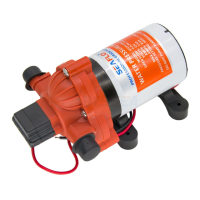
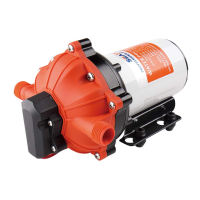
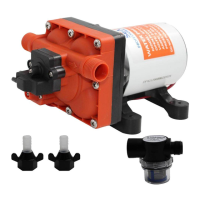
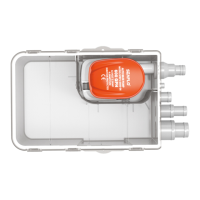
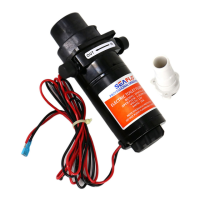
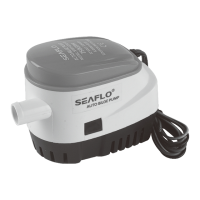
